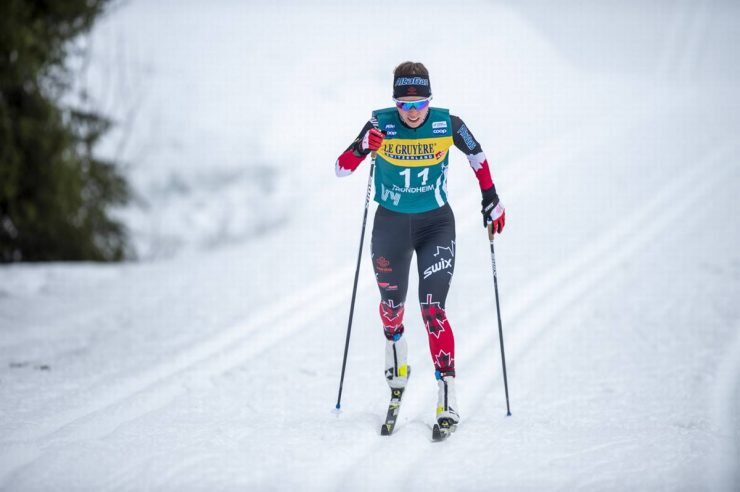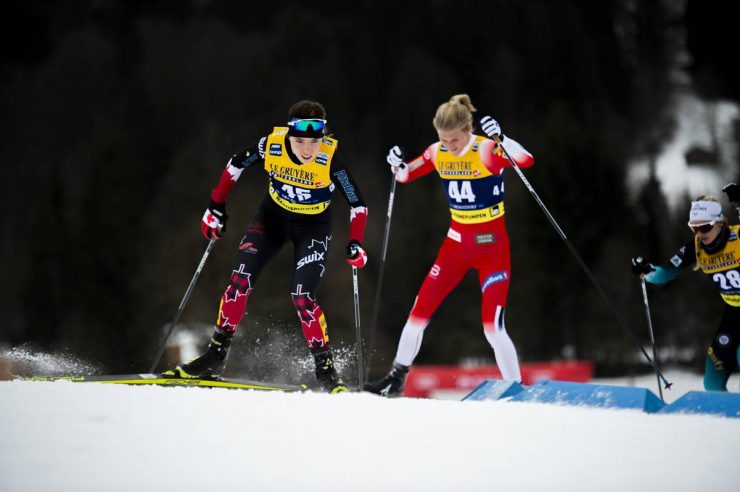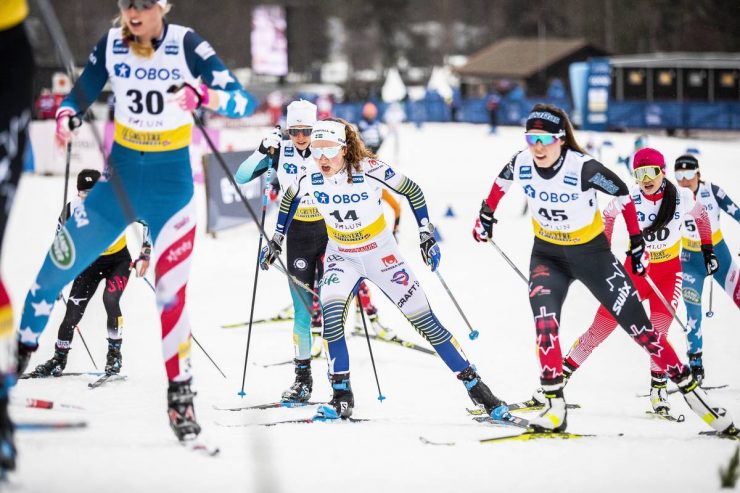
Win now? Win later? Or somewhere in between?
A one year plan with a World Champs looming in 2021 or something befitting a six-year plan for capturing hardware at the 2026 Winter Games in Italy? Those are the strategies in play as national teams set budgets, rosters, and priorities. For countries like Norway and Sweden – at least on the Swedish women’s side – win now and later seems to be the constant background noise. For other nations like the U.S. and Canada, with smaller pools of championship medal pedigree, planning for the short, near, and long-term can be like juggling four different objects all of different masses. There’s almost too much to coordinate.
Nordiq Canada made it explicit: medal potential at the 2026 Games was the end goal. With a solid second-place finish in the junior men’s 4 x 5 k relay at the 2020 Junior Worlds, Canada may be primed for a delayed gratification epiphany six years out. But translating that 2020 success, with a young corps of skiers, does not necessarily translate to World Champs or Olympic hardware.
When Katherine Stewart-Jones was initially not renamed to the 2020-2021 Canadian National Team, the news came as a thud to many Canadians following the sport. At twenty-five-years-old, Stewart-Jones doesn’t exactly trend towards ancient in ski racing terms. This season, she placed 29th overall, the fourth-best placed North American behind Jessie Diggins, Sadie Maubet Bjornsen, and Rosie Brennan (all of the U.S.) in the Ski Tour 2020. That series of six races split between Sweden and Norway featured a loaded field. A 29th overall was real. It was Stewart-Jones’s best World Cup result since her first World Cup race in Planica, Slovenia in 2016.
In Canada, skiers must qualify for each respective period of the World Cup. In years past, Stewart-Jones earned World Cup race starts after solid results on the NorAm circuit as the Continental Cup leader. Just this season, of the six NorAm races she contested, she won a 10 k classic, a 5 k skate, and a classic sprint. In her other three races, she was top Canadian at a NorAm/SuperTour weekend: Second in a skate sprint, third in a 5 k classic, and third in 10 k skate.
She punched her ticket to Europe as the COC leader and guaranteed funding.

Stewart-Jones skied for Thunder Bay NTDC for four seasons. Last spring, she relocated to Canmore with Erik Bråten as her only coach. She still represents Nakkertok, her home club, but does not belong to a training centre.
Despite making career-best marks on the World Cup, she failed to meet the national team’s objective criteria: she needed to place in the top-20 twice on the World Cup, or a single top-12, or earn at least 22 World Cup Points. She fell short. The team selection criteria did not allow athletes born in 1995 (her birth year) or earlier to be discretioned.
“I think it is important to support the top as well as the people that are coming up,” Stewart-Jones said. “I think most people would agree with that. It is a tough situation to be in.”
The national team skews young, with the oldest athlete on the senior team, Dahria Beatty, at 26, and the average age roughly 22.
Nordiq Canada provides a national team selection appeals process that Stewart-Jones took advantage of. When the appeal was filed, a three-person panel approved by both Stewart-Jones and Nordiq Canada considered the case. The panel ruled in favor of Stewart-Jones, declaring that her 9th place time of day during the Ski Tour 2020’s 10 k classic pursuit counted towards the criteria. She was renominated to the 2020-2021 national team. (The original criteria did not specify time of day as a consideration for overall place.)
“I have had a lot of people ask me if the fact that you didn’t get renamed to the national team in the first place, is that extra motivation to race fast? And I don’t get that,” said Stewart-Jones. “To me, it would never be a motivation, because I am doing it because I really just want to be the best in the world and that is why I have done this for the last however many years. So, when it comes down to it, what motivates me is just improving and there is just always always always something to improve on. Which is what makes skiing so fun to me.”
National team selection was critical for Stewart-Jones to maintain funding. As a member of the national team, she would be “carded”, and receive financial support from the government’s Athlete Assistance Program (AAP). For Stewart-Jones, the AAP helped offset the majority of her ski racing costs for the past five years.

Coming into last season, Stewart-Jones understood meeting the objective criteria for renomination would have been a massive leap. With one eye on renomination, she felt the added pressure. Knowing the criteria’s benchmarks, she explained that although she made gains, in the back of her mind she understood some would percieve her results as underperforming.
“I would still get disappointed even if I did improve a lot, which can be a good thing and a bad thing at the same time,” Stewart-Jones said. “For me it was important to make the national team so that was definitely a focus I had this season. Which, I think, is not the best when your focus is just the results that allow you to make the national team the next year.”
If steady improvements are considered, then Stewart-Jones and her move to Canmore have paid off. Starting last year she began working with National Team coach Erik Bråten. As she upped her hours, which were considerable, she allowed herself more autonomy in creating her training plan while absorbing Bråten’s ideas.
“I think that was the biggest factor with me improving so much was just that I was able to have more input on what I was doing,” said Stewart-Jones.
Along with the autonomy, she increased her training by roughly 150 hours total over the past two years. In Canmore, she’s part of a group of women a text away from a workout. There’s Dahria Beatty, Maya MacIsaac-Jones, and Annika Richardson among others who can push Stewart-Jones on any given day.
This season left many unknowns on the table. For North American skiers, the prospects for a home snow advantage were fleeting. The Canadian World Cup races were canceled while the World Cup family had already descended on Québec City. Stewart-Jones was slated for the distance races in Canmore. With the season aborted, she missed out on her two most important opportunities to make a statement and make the leap to meeting national team objective criteria.
Cycling into the summer, the where and when for next season’s World Cup calendar is unsettled. Short-term or long-term, win now or later, Stewart-Jones is zeroing in on a 2021 World Championship run as Canada finds its footing with new leadership.
Jason Albert
Jason lives in Bend, Ore., and can often be seen chasing his two boys around town. He’s a self-proclaimed audio geek. That all started back in the early 1990s when he convinced a naive public radio editor he should report a story from Alaska’s, Ruth Gorge. Now, Jason’s common companion is his field-recording gear.



